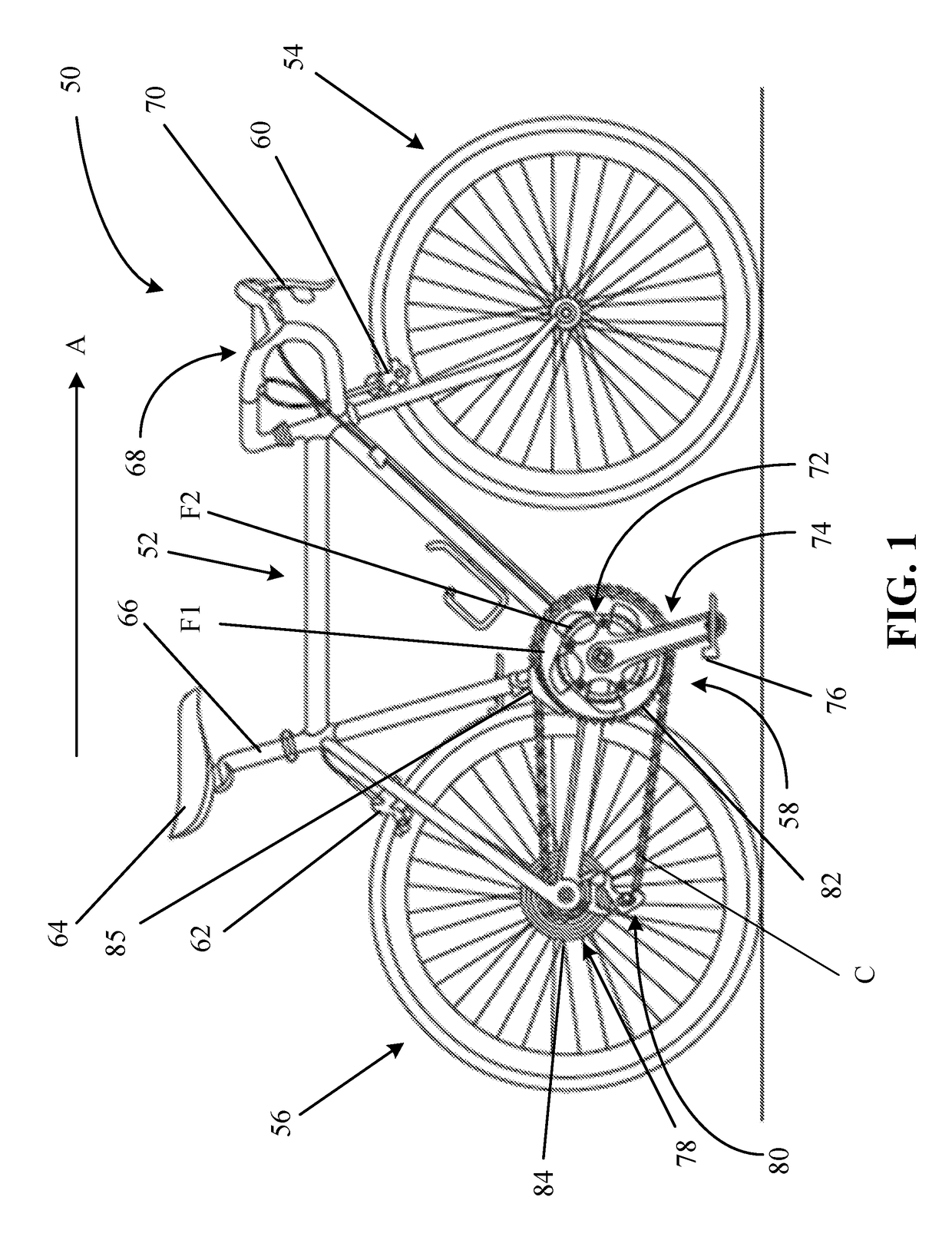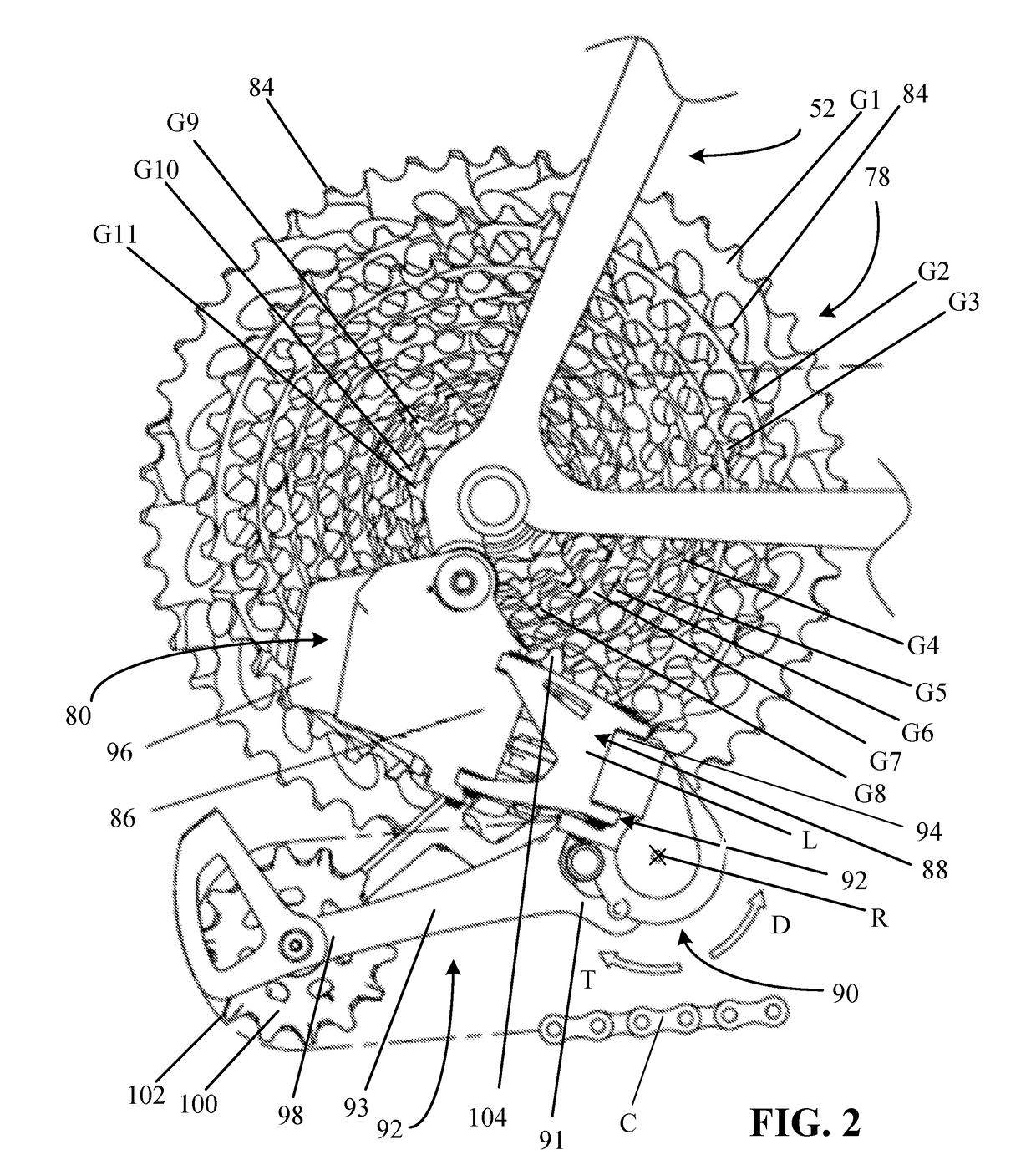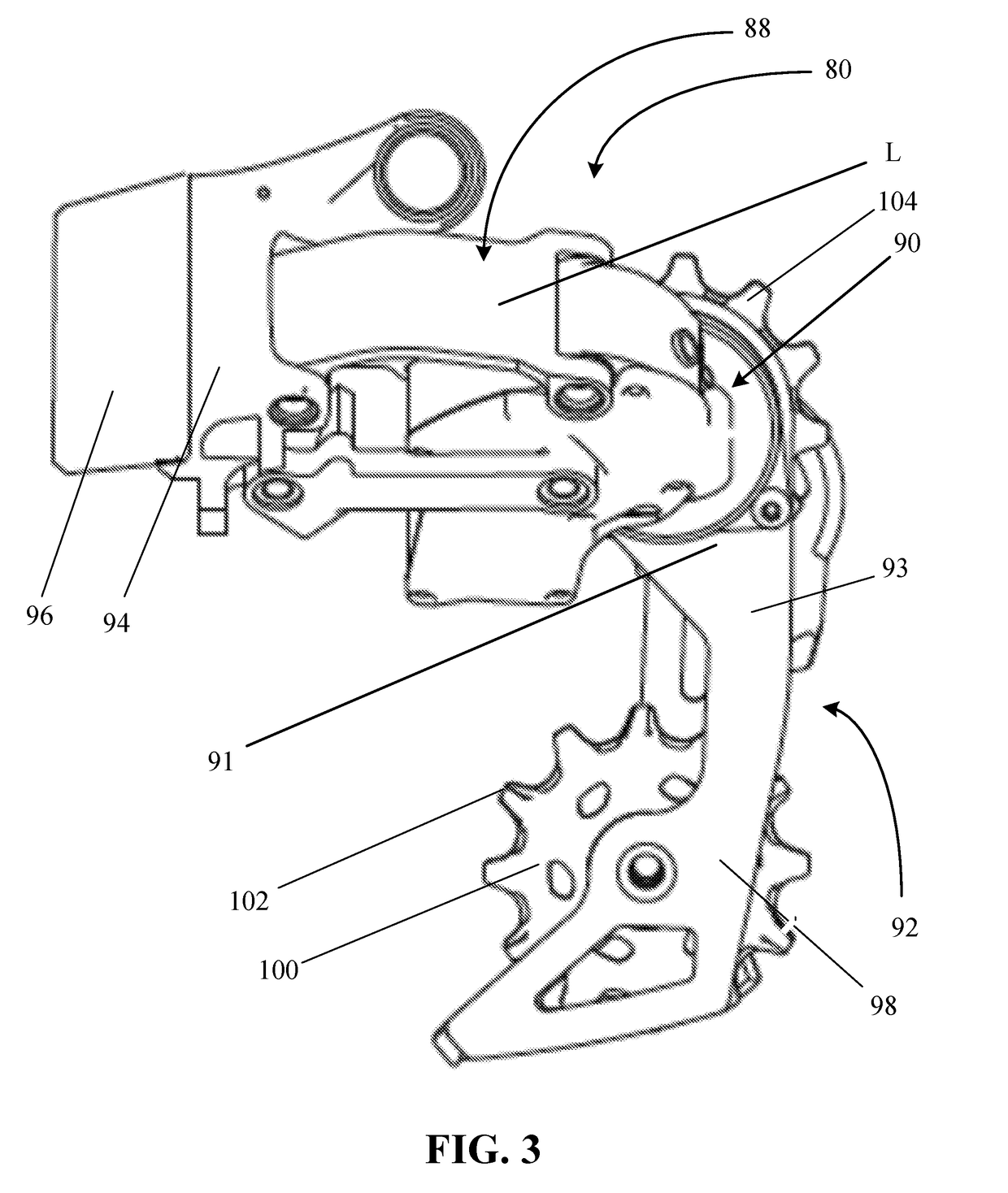Damper for a bicycle component
a technology for bicycle components and derailleur bodies, which is applied in the direction of bicycle brakes, chain/belt transmissions, vehicle components, etc., can solve the problems of chain tensioners that cannot be rotated in the chain slackening direction, chain slapping against the frame of the bicycle, and the chain is slack
- Summary
- Abstract
- Description
- Claims
- Application Information
AI Technical Summary
Benefits of technology
Problems solved by technology
Method used
Image
Examples
Embodiment Construction
[0044]The present disclosure provides examples of friction dampers and bicycle rear derailleurs that solve or improve upon one or more of the above-noted and / or other disadvantages with prior known dampers and derailleurs. The disclosed friction dampers eliminate the need to include roller clutches in the damper. The friction damper restricts derailleur chain tensioner movement in a forward chain tensioner rotational direction and helps control a chain oscillatory amplitude (e.g., a vertical chain amplitude) of a lower half of the chain when the bicycle is subject to ground input (e.g., vertical ground input). A significant advantage of the disclosed friction dampers is that damping forces are higher when the derailleur chain tensioner is rotated in the forward chain tensioner rotational direction compared to the backward chain tensioner rotational direction. The higher damping forces in the forward chain tensioner rotational direction help limit the chain amplitude, while the lower...
PUM
 Login to View More
Login to View More Abstract
Description
Claims
Application Information
 Login to View More
Login to View More - R&D
- Intellectual Property
- Life Sciences
- Materials
- Tech Scout
- Unparalleled Data Quality
- Higher Quality Content
- 60% Fewer Hallucinations
Browse by: Latest US Patents, China's latest patents, Technical Efficacy Thesaurus, Application Domain, Technology Topic, Popular Technical Reports.
© 2025 PatSnap. All rights reserved.Legal|Privacy policy|Modern Slavery Act Transparency Statement|Sitemap|About US| Contact US: help@patsnap.com



